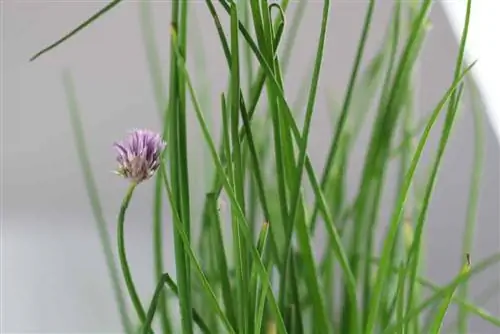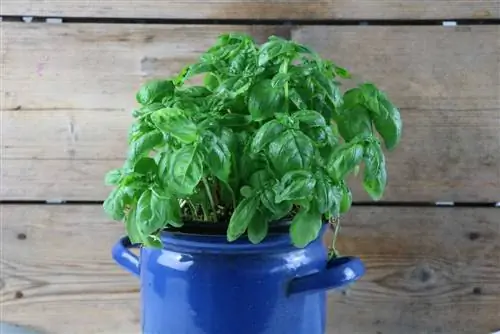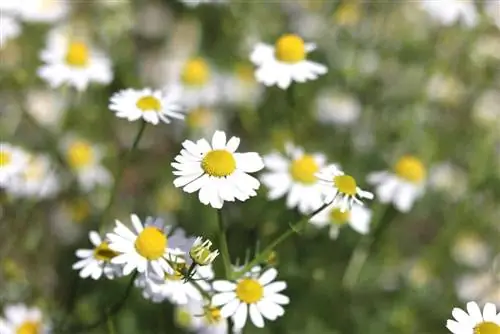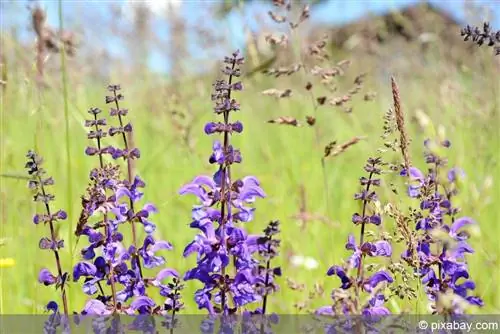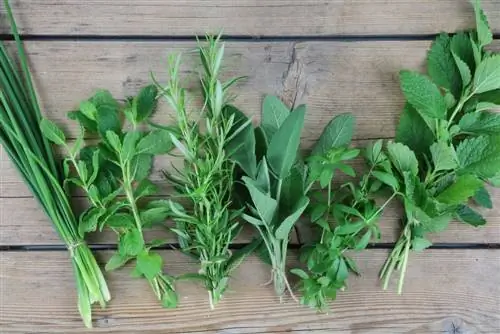- Author admin [email protected].
- Public 2023-12-17 03:39.
- Last modified 2025-01-24 12:45.
More and more hobby gardeners are enjoying herbs because the plants can be easily cultivated in the herb bed and even overwintered. The possible uses of the herbs are just as varied as the selection of herb types. Find out here which herb plants survive the cold winter months in the herb bed without any problems!
Scented herbs
The term “fragrant herb” does not come from botany, but from colloquial language. This refers to herbal plants that have a particularly pronounced, aromatic scent. The strength of the scent depends on the type of plant and the time of day. Because the scented herbs develop their scent at different times of the day. The most popular perennial and hardy aromatic herbs include:
Curry herb
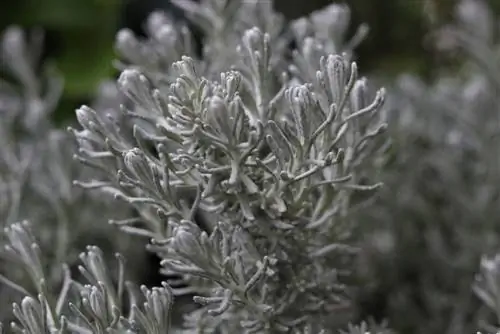
The curry herb belongs to the genus Asteraceae and is only partially hardy in local regions. Therefore, to be on the safe side, the plant should be overwintered in a cool place during the winter months. A bright staircase or an unheated garage with windows, for example, is suitable for this. The curry herb is characterized by the following characteristics:
- Latin name: Helichrysum italicum
- Flower color: yellow flower clusters and silvery leaves
- Scent: slightly exotic curry scent
- Use: rice dishes, soups and meat dishes
Fennel
A particularly popular scented herb is fennel, whose leaves are strongly aromatic. The fresh tubers and seeds can also be used as spices. On top of that, it impresses with its soothing effect on stomach cramps and coughs. Fennel is only partially hardy in unfavorable locations. Therefore, it is necessary to cut the plant in autumn and cover the roots. Fennel has the following attributes:
- Latin name: Foeniculum vulgare
- Synonyms: Fenis, Enis, Fennekel, Common Fennel
- Flower color: yellow
- Scent: spicy, reminiscent of the smell of anise and menthol
- Use: Spice for stews, fish dishes
Real Lavender
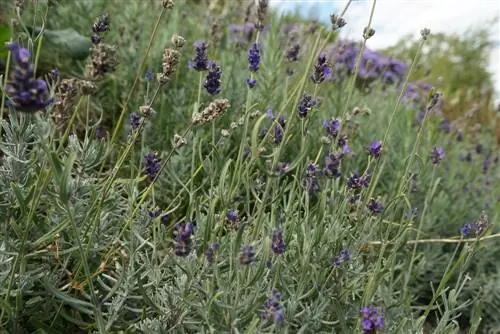
Lavender is extremely popular among hobby gardeners, and rightly so, because the plant exudes an extremely pleasant scent. There are numerous varieties of lavender, although only some of them are hardy. Real lavender can withstand short-term temperatures of up to minus 15 degrees and can therefore be overwintered outdoors without any problems. Real lavender is characterized by the following properties:
- Latin name: Lavendula angustifolia
- Synonyms: Lavander, Kleiner Speik
- Flower color: blue or violet, evergreen
- Scent: sweet with floral nuance
- Uses: aromatherapy, oils, soap, tea
Mint
Mint is generally considered hardy, although some varieties of mint should be provided with winter protection in the cold months. The completely solid winter varieties include apple mint (Mentha suaveolens), water mint (Mentha aquatica) and peppermint (Mentha x piperita). The mint impresses with the following properties:
- Latin name: Mentha
- Flower color: pink to purple-red
- Fragrance: varies depending on the variety
- Use: sweet and savory dishes
Lemon balm
Lemon balm, also known as lemon herb, is extremely robust and can therefore be easily overwintered in cold regions. Often winter protection is not even necessary for overwintering. Lemon balm is also characterized by the following properties:
- Latin name: Melissa officinalis
- Flower color: pale yellow to white/red
- Fragrance: mild, delicately citrus-scented aroma
- Uses: fish dishes, salads, jams and as a medicinal herb
Spice herb
The term “spice herb” does not come from botany, but rather from colloquial language. Herbs are cultivated plants whose plant parts can be used and/or further processed. The flowers, fruits and leaves of the herbs are often used. The most popular perennial and hardy herbs include:
Wild garlic
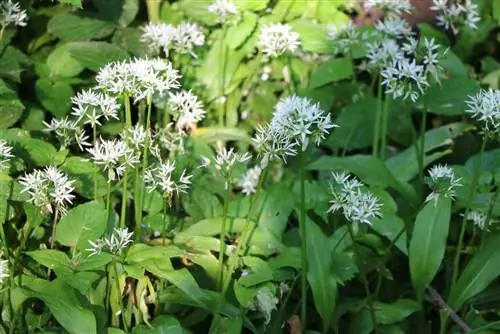
Wild garlic is actually not one of the (classic) herbs because it is a wild vegetable. Although wild garlic is hardy, it is best to cover it with a layer of leaves from autumn onwards. Wild garlic has the following properties:
- Latin name: Allium ursinum
- Synonyms: gypsy garlic, witch's onion, wild garlic
- Taste: reminiscent of the aroma of garlic
- Use: herb quark, spreads, pesto
Watercress
Watercress is a marsh or aquatic plant that is preferably grown near water, such as a pond. Although it is considered hardy, care should be taken to ensure that the plant does not freeze in water during the cold months. Watercress is characterized by the following characteristics:
- Latin name: Nasturtium officinale
- Synonyms: Bachbitterkraut, bitter lettuce, Kersche
- Taste: bitter and slightly spicy
- Use: salad, herb quark, cream cheese, spread
Tarragon
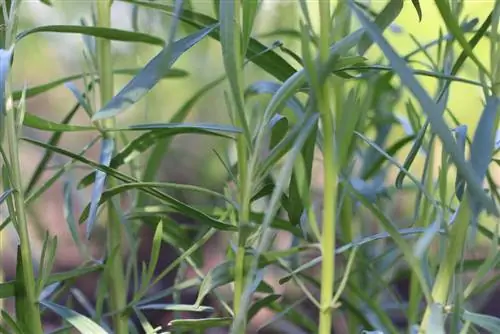
Tarragon is generally considered hardy and can remain in the same location for several years. However, French tarragon is not particularly hardy compared to Russian tarragon. Tarragon has the following properties:
- Latin name: Artemisia dracunculus
- Synonyms: Bertram, dragon herb, snake herb, beer ram
- Taste: relatively bitter with a tart note
- Uses: sauces, poultry dishes, fish and vegetables
Eberraute
Eberraute is used in local kitchens and also promotes digestion. In the herb garden, the boar's rue plant can easily survive the winter. All that is required is that the plant is cut back to the ground. The boar's rue is characterized by the following features:
- Latin name: Artemisia abrotanum
- Synonym: lemon herb, cola bush
- Taste: bitter
- Use: hearty meat dishes, salads, tea, sauces, fish dishes
lovage
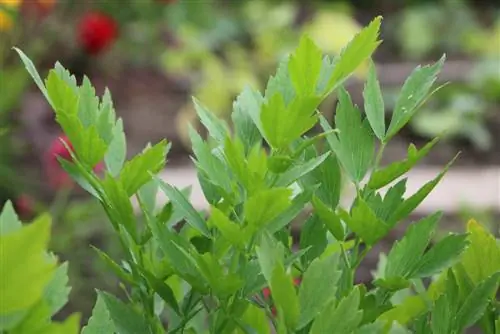
The lovage is a particularly robust herb plant and can easily survive temperatures down to minus 20 degrees. When overwintering, just make sure that the plant is watered moderately on frost-free days. The lovage has the following attributes:
- Latin name: Levisticum officinale
- Synonyms: Maggikraut, Nutstock, Lavas
- Taste: reminiscent of celery, but a little sharper and bitter
- Use: hearty dishes, meat and fish dishes, stews and soups
parsley
Parsley is extremely robust and easily survives the cold winter months. Although winter protection is usually not necessary, it is still advisable. Straw, leaves or brushwood, for example, are suitable for this. Parsley has the following properties:
- Latin name: Petroselinum crispum
- Synonyms: culinary herb, parsley
- Taste: fresh-tart
- Use: salad, soups, fish and meat dishes
Rosemary
Rosemary is generally only considered winter-proof to a limited extent. Nevertheless, it is possible to get the herb through the winter safely by giving it suitable winter protection. Rosemary varieties such as Arp, Salem or Hill Harry are suitable for overwintering. Rosemary is characterized by the following characteristics:
- Latin name: Rosmarinus officinalis
- Taste: spicy-tart, slightly bitter and resinous
- Use: meat dishes, herb mixtures, soups
Chives
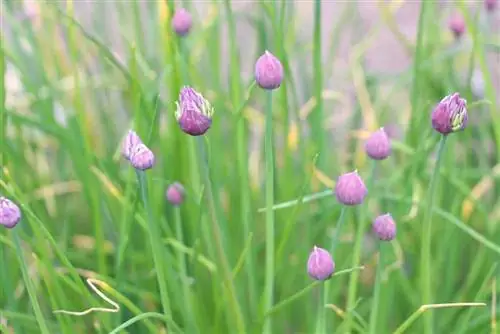
The chives survive the cold winter months here without any problems because they can withstand temperatures of up to minus 25 degrees. In order to overwinter the chives, it is still advisable to cut them off in autumn and cover them with a layer of mulch. Chives have the following properties:
- Latin name: Allium schoenoprasum
- Taste: strong spicy, slightly spicy
- Use: spread, herb dips, herb quark
Thyme
Thyme originally comes from the warm Mediterranean region, but there are now numerous winter-hardy varieties. Mild winters are generally not a problem for thyme, whereas it should be provided with winter protection during longer periods of frost. Thyme has the following characteristics:
- Latin name: Thymus vulgaris
- Synonyms: garden thyme, maiden humility, beesweed, tripe herb, thyme
- Taste: slightly bitter, strong-savoury
- Uses: fish dishes, poultry, game, pies
Medicinal herbs
The term “medicinal herbs” also does not come from botany and refers to plants whose ingredients have a positive effect on he alth. So-called medicinal herbs have different applications and are used, for example, for stomach problems or high blood pressure. The most well-known perennial medicinal herbs include:
Common Horehound
The herb can easily survive temperatures down to around minus 12 degrees and is therefore considered hardy. Nevertheless, it is advisable to offer protection, especially to younger plants, in the winter months. For this it is sufficient to cover the ground with, for example, brushwood. The horehound has the following properties:
- Latin name: Marrubium vulgare
- Synonyms: Common Horehound, White Dorant, St. Mary's Nettle, God's Help
- Ingredients: bitter substance called marrubiin
- Effect: relieves stomach problems, digestive problems, coughs, bile problems
Stinging Nettle
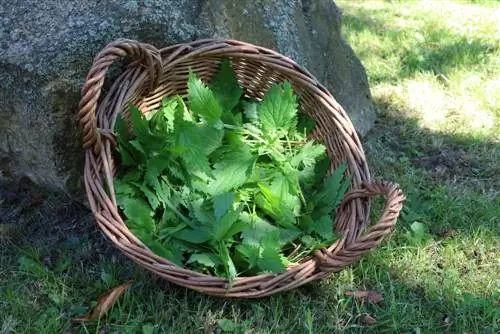
Stinging nettle is widely considered an unpleasant herb because touching its leaves can cause painful rashes. Nevertheless, the nettle is an indispensable part of home gardens because it contains numerous ingredients that have a positive effect on human he alth. The nettle is also hardy and can easily survive the winter months in the herb garden. The plant is characterized by the following properties:
- Latin name: Urtica dioica
- Synonyms: hair nettle, sharp nettle, thousand nettle, hemp nettle
- Ingredients: flavonoids, phytosterols, minerals
- Effect: lowers blood pressure, diuretic, anti-inflammatory, antispasmodic
woman's coat
The lady's mantle is quite winter hardy in mild locations. In harsher regions, however, the plant should be given winter protection as a precaution. For this purpose, the root area is covered with leaves and brushwood, for example. The lady's mantle impresses with the following features:
- Latin name: Alchemilla xanthochlora
- Ingredients: high number of tannins
- Effect: relieves gastrointestinal complaints, blood purifying, antispasmodic, antibacterial
St. John's Wort
St. John's wort is generally considered winter-hardy, but it is still advisable to protect the plant from frost in the cold months. To do this, the plant is cut back before overwintering and then covered with a layer of compost or alternatively with leaves or brushwood. St. John's wort has the following attributes:
- Latin name: Hypericum perforatum
- Synonyms: witchweed, ragwort, bloodwort, virility, solstice
- Ingredients: Hypericin
- Effect: relieves mild depression, dry skin, wound treatment
Real Chamomile
Chamomile is considered to be sensitive to frost, but can be overwintered. All that is necessary is to regularly protect the plant with a layer of straw. Real chamomile is characterized by the following properties:
- Latin name: Matricaria recutita
- Synonyms: hermel, feverfew
- Ingredients: essential oils, flavonoids, bitter substances and coumarins
- Effect: relieves indigestion, diarrhea, skin diseases, inflamed respiratory tract
True Sage
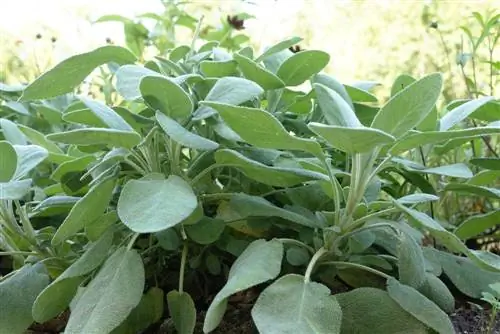
Real sage is a perennial herb and survives the cold winter months without any problems. However, it is advisable to protect the plant from the snow by covering it with brushwood or leaves. The real sage has the following characteristics:
- Latin name: Salvia officinalis
- Synonyms: kitchen sage, garden sage
- Ingredients: tannins and bitter substances, essential oils
- Effect: antibacterial, antispasmodic, anti-inflammatory and blood purifying
Tip:
Most medicinal herbs can be quickly and easily made into a soothing tea. To do this, chop the herbs and put them in a sieve. Then pour some boiling water over it and let it steep for a few minutes. The healing tea is ready!
Wild herbs
The term “wild herbs” is a colloquial, positive term for weeds. Because it refers to non-cultivated, herbaceous wild plants that are edible and usable for other purposes. The most famous perennial wild herbs include:
Mugwort
Mugwort is a wild herb, but it is also an extremely popular herb. It can easily be cultivated in the herb bed as it is considered to be absolutely winter hardy. Mugwort is characterized by the following properties.
- Latin name: Artemisia vulgaris
- Synonyms: wild wormwood, mugwort, werezwisch, midsummer belt
- Use: Spice and medicinal herb
- Effect: relieves headaches, nausea, inner restlessness
Comfrey
Comfrey is one of the oldest known medicinal plants and is also extremely undemanding. This is due to its “self-sufficiency”, as it supplies itself with sufficient water and nutrients via its roots. The comfrey also has the following characteristics:
- Latin name: Symphytum officinale
- Synonyms: Wallwurz, Soldierwurz, Comfrey
- Use: Leaves for salads, can also be used as a medicinal herb
- Effect: helps with osteoarthritis, broken bones, wound healing, strains
Dandelions

The dandelion is extremely adaptable and is considered a true survivor. It can therefore be cultivated in the herb bed and overwintered there without any concerns. It is noteworthy that the plant dies above ground, but sprouts again in spring. The dandelion has the following properties:
- Latin name: Taraxacum officinale
- Synonyms: heart healing, cane lettuce, May flower, eye milkweed
- Use: salads, pestos and as a medicinal herb
- Effect: antispasmodic, diuretic, anti-inflammatory, appetite stimulating
Ribwort Plantain
The ribwort plantain has been one of the most important medicinal plants since ancient times. It is considered hardy and retains some of its leaves during the cold winter months. No special precautions are required for wintering. The ribwort plantain impresses with the following features:
- Latin name: Plantago lanceolata
- Use: wild herb salads, cream cheese, herb quark and medicinal herbs
- Effect: relieving irritation, antibacterial, anti-inflammatory, antitussive
ornamental herb
The term “ornamental herb” also does not come from botany, but is purely a sales term. So-called “ornamental herbs” are plants that have a particularly decorative appearance. The most popular perennial ornamental herbs include:
Rue
The rue is only partially hardy, but with certain precautions it can be brought through the winter in one piece. For example, piling up the root area with soil or staking the stick with brushwood is suitable for this. The rue has the following properties:
- Latin name: Ruta graveolens
- Appearance: evergreen, yellow flowers
- Use: Spice and medicinal herb
- Effect: Relieves joint pain, eczema, psoriasis, varicose veins
Conclusion
Growing herbs is definitely worth it because the plants can be processed in a variety of ways and have a number of positive effects on he alth. Many herbs are also perennial and winter-hardy and can therefore easily find their way into your home herb bed.

